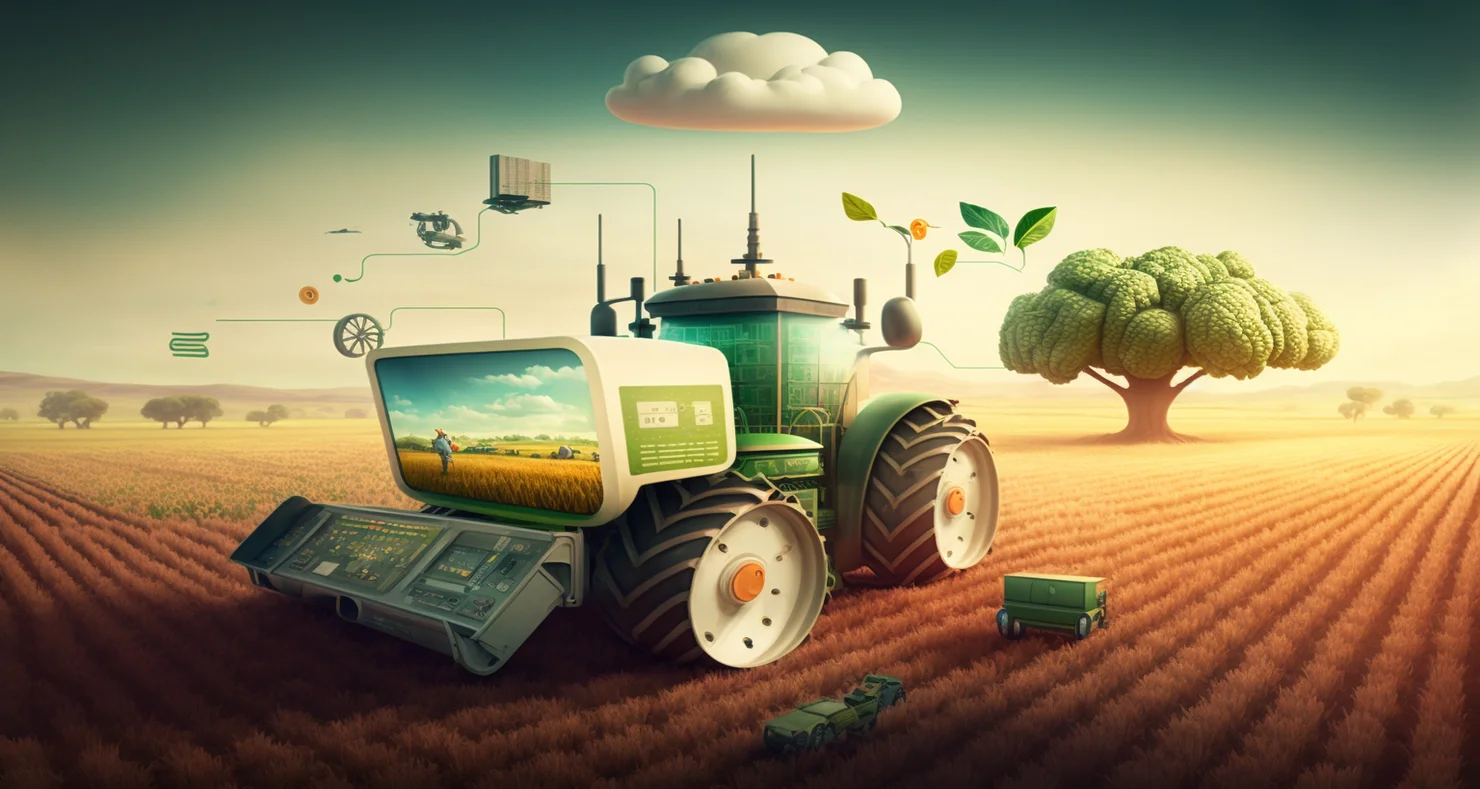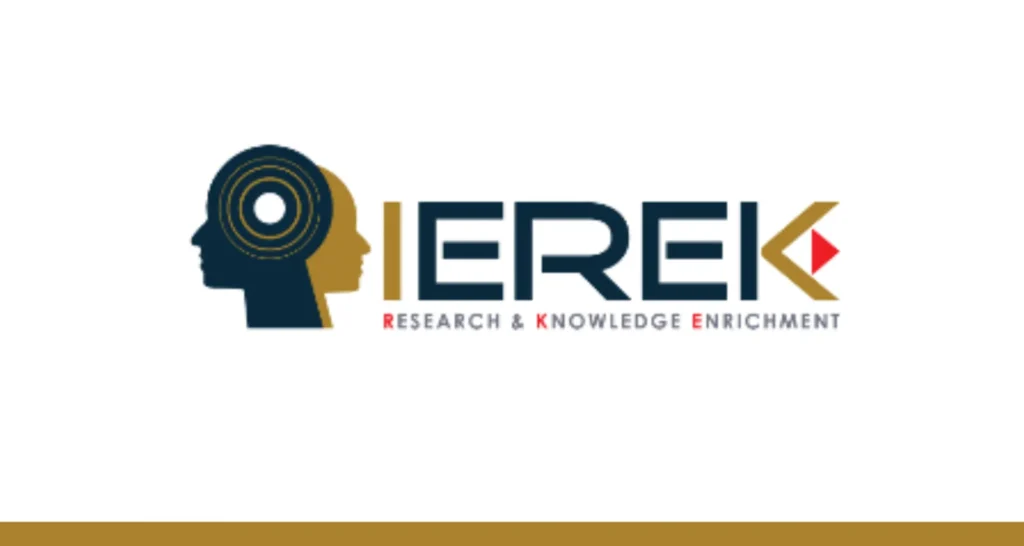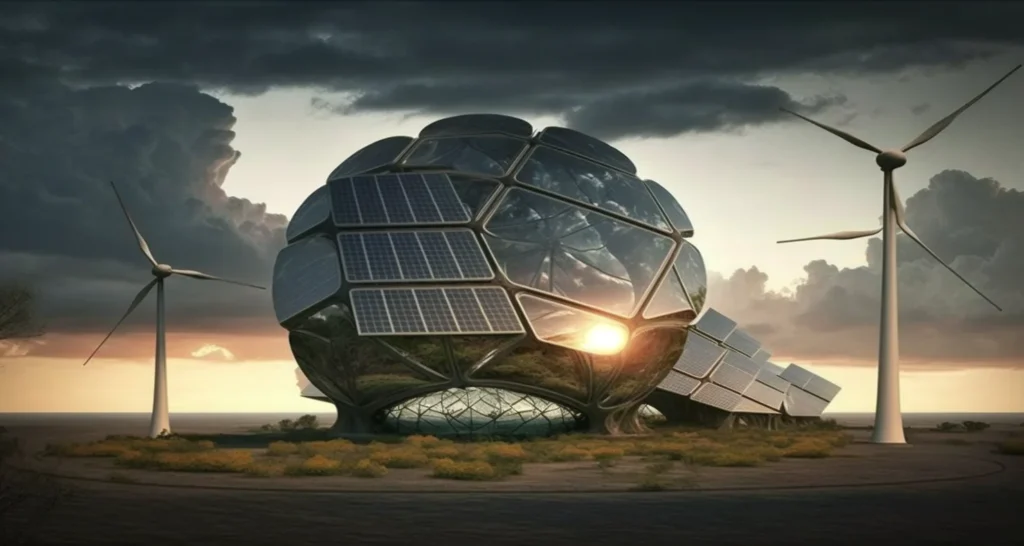As the world grapples with the challenges of food security, environmental sustainability, and the need to feed a growing population, the concept of smart farming has emerged as a beacon of hope. Combining technology with agriculture, smart farming is reshaping traditional practices and offering solutions to mitigate greenhouse gas emissions, ensure food security, and usher in a new era of sustainable food logistics. This article delves into the transformative potential of smart farming in securing our global food supply while fostering environmental stewardship.
Smart Farming and the Green Revolution:
The green revolution of the 20th century transformed agriculture, increasing crop yields and averting mass famines. Today, the marriage of technology and agriculture in the form of smart farming is poised to lead the next green revolution. Smart farming integrates precision agriculture, IoT sensors, data analytics, and automation to optimize crop growth, resource utilization, and farm management. This innovation holds the promise of doubling productivity while minimizing the environmental impact.

Reducing Greenhouse Gas Emissions:
Agriculture is a significant contributor to greenhouse gas emissions through practices like excessive fertilizer use, livestock emissions, and land-use changes. Smart farming presents a remedy by allowing farmers to monitor soil conditions, crop health, and weather patterns in real time. By providing data-driven insights, smart farming helps optimize the use of fertilizers and pesticides, thereby reducing emissions and minimizing the ecological footprint.
Enhancing Resource Efficiency:
Resource efficiency lies at the core of smart farming. Through precision irrigation systems, farmers can deliver the right amount of water to crops, minimizing wastage and conserving this precious resource. Similarly, automated machinery and drones aid in efficient planting, harvesting, and crop maintenance, reducing energy consumption and promoting sustainable practices.
Securing Food Logistics and Reducing Waste:
Smart farming goes beyond the field to secure food logistics. With real-time data on crop conditions, supply chain management becomes more accurate and responsive. This minimizes food spoilage during transit, reduces food waste, and ensures that the right quantity of fresh produce reaches consumers, contributing to global food security.
Promoting Biodiversity and Soil Health:
Smart farming emphasizes biodiversity and soil health, essential for long-term sustainable agriculture. By monitoring soil health and promoting organic practices, farmers can maintain soil fertility, prevent erosion, and reduce the need for chemical inputs. This fosters a harmonious relationship between agriculture and the environment, preserving ecosystems and natural resources.
Empowering Farmers and Food Security:
At its core, smart farming empowers farmers with data-driven insights and actionable information. By making informed decisions, farmers can adapt to changing climate conditions, optimize crop varieties, and enhance overall yield. This empowerment translates to improved livelihoods, increased food production, and a more secure food supply.

The global Green Revolution of the ‘60s ushered in a new era in food production. It combined new ideas, technologies, and methods to address some of the most trying issues of the day. The movement has had a transformative impact on agricultural production. Over the past 50 years, food production has increased threefold as the global population doubled. The production increase has been achieved without necessitating a proportional expansion in farmlands, thus limiting biodiversity loss. And there has been a significant decline in food prices, by as much as 35-66 percent according to some estimates.
But now the agricultural sector has reached another critical inflection point. It is faced with a new set of challenges, including agricultural productivity, food security, and a raft of other contemporary concerns, that may necessitate a second Green Revolution.
The Food and Agriculture Organization of the United Nations (FAO) recently released a report detailing the issues that have to be addressed in order to move forward. Leading the charge is food security and the need to increase food production to cope with a 50 percent increase in demand by mid-century. There also has to be a focus on raising stagnant yield growth rates and reducing food loss and waste, estimated by the FAO to be about a third of all food produced every year.
Productivity enhancements have to be balanced by a concern for the larger environmental impact of agricultural practices like natural resource depletion, land degradation, deforestation, rising greenhouse gas emissions, biodiversity loss, etc.
The last Green Revolution was predominantly about high-intensity production combining large-scale mechanization, high-yield seeds, and synthetic inputs. Green Revolution 2.0 will build on the best principles of that model to usher in a new age of Smart Farming that takes a more holistic approach to the practice of agriculture. The emphasis will be on using granular data and smart technologies to enable intelligent, innovative, and sustainable solutions for the entire food chain.
The smart farming concept encompasses a rather expansive mandate, expressed as the seven ‘E’s by a member of the Indian Society of Agricultural Economics. But for the purpose of this column, we shall focus on two central components of the smart farming model – precision farming and climate-smart farming.
Precision Farming
Precision farming is a technology-enabled holistic approach to farm management that enables the deployment of the right resources, in the right quantities, at the right time and place to ensure optimum impact and productivity. As with the smart city concept, smart farming relies on a range of emerging technological concepts such as IoT, M2M, Big Data, autonomous vehicles, drones, etc. to enable quick, accurate, and efficient decision-making. The focus is on creating solutions that maximize productivity, optimize resource consumption, reduce waste and enhance sustainability. Precision farming is a data-driven model that allows farmers to intelligently prioritize resource deployment for maximum impact, predict and protect against performance risks like disasters and diseases and make farm operations more productive and profitable.
Technology will also play a key role in what a recent research report refers to like the post-farm-gate supply chain and help reduce food loss and waste, detect contamination, and streamline the value chain from farm-to-fork.

Climate-smart agriculture
Agriculture accounts for 70 percent of the world’s freshwater consumption, 80 percent of tropical deforestation, and 25 percent of greenhouse gas emissions. The enormity of this ecological footprint is a challenge that needs to be addressed with the same urgency as production volume and efficiency. Climate-smart agriculture (CSA) is the solution proposed by FAO to achieve sustainable agricultural development for food security under climate change.
CSA stresses the need for an integrated and innovative approach to agriculture that links food security and productivity goals to environmental impact factors like greenhouse gas emissions, sustainability, and building systemic resilience to the impact of climate change.
For India, precision and climate-smart farming techniques are as much an imperative as they are opportunities. The country’s agriculture sector accounts for 60 percent of the land, employs over 50 percent of the population, and contributes to about 14 percent of GDP. Increases in food grain production are being undercut by drops in per capita food grain availability. The country also has rather low yield rates compared to its BRIC counterparts with one report hypothesizing that a rise in yield rates to China’s levels would halve the land required for cultivation.
Climate change is also emerging as a very real threat for a sector whose output depends predominantly on monsoon patterns. A 2013 World Bank report concluded that a temperature increase of 2°C-2.5°C, compared to pre-industrial levels, will impact food adequacy for nearly 63 million people by 2050. More recent studies by the Indian Agricultural Research Institute project a drop in rice production by almost a ton per hectare for every 2°C rises in temperature.
In India, there already are calls for an ‘evergreen revolution’ from the Father of the Indian Green Revolution, M S Swaminathan as well as the country’s Prime Minister. India will have to embrace smart farming models and focus on integrating ecology and technology in order to increase food security, yields, and productivity without compromising on environmental and sustainability goals.













